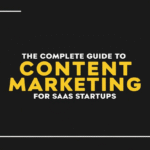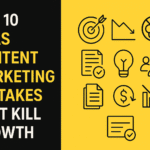In the fast-evolving digital landscape of 2025, a blog is no longer optional for businesses—it’s a strategic necessity. With competition fiercer than ever, a well-executed blog serves as a powerhouse for SEO, brand authority, and lead generation. Here’s why your business can’t afford to ignore blogging in 2025, along with actionable steps to get it right.
1. SEO Benefits: Fueling Visibility in Search Engines
Search engines prioritize fresh, relevant content—and blogs deliver exactly that. Here’s how blogging supercharges your SEO strategy:
- Keyword Targeting: Blogs allow you to target niche, long-tail keywords that align with user intent. For example, a bakery might optimize for “gluten-free birthday cake recipes 2025” to attract specific audiences.
- Fresh Content: Regular updates signal to search engines that your site is active, improving crawl frequency and rankings.
- Internal Linking: Blogs create opportunities to link to product pages or service offerings, distributing page authority across your site.
- Lower Bounce Rates: High-quality, engaging content keeps visitors on your site longer, reducing bounce rates and boosting SEO.
- E-A-T Compliance: By 2025, Google’s emphasis on Expertise, Authoritativeness, and Trustworthiness (E-A-T) is critical. Blogs showcase your industry knowledge, supporting your site’s credibility.
2. Brand Authority: Establishing Thought Leadership
In a crowded market, trust is currency. Blogs position your business as a go-to resource:
- Demonstrate Expertise: Share in-depth guides, case studies, or trend analyses to highlight your knowledge. For instance, a SaaS company might publish a report on “AI-Driven Marketing Trends in 2025.”
- Build Trust: Transparent, value-driven content fosters customer loyalty. Answer common pain points or debunk myths in your industry.
- Community Engagement: Encourage comments and social shares to create a dialogue. A fitness brand could host Q&A blogs to interact with followers, strengthening relationships.
3. Lead Generation: Turning Visitors into Customers
Blogs are a magnet for high-intent traffic. Here’s how they drive leads:
- Attract Targeted Traffic: Optimized content draws users searching for solutions. A financial consultancy blogging about “2025 Tax-Saving Strategies” attracts potential clients.
- CTAs and Lead Magnets: Embed calls-to-action (CTAs) like “Download Our Free E-Book” or “Book a Consultation” within posts. Gate premium content (e.g., templates, whitepapers) behind email sign-ups.
- Nurture Leads: Use blogs to guide prospects through the sales funnel. Follow-up emails with related content keep your brand top-of-mind.
How to Blog Right in 2025: A Step-by-Step Guide
1. Know Your Audience
- Create buyer personas to tailor content. Use surveys or analytics to identify their pain points and preferences.
2. Master Keyword Research
- Use tools like Ahrefs or SEMrush to find low-competition, high-impact keywords. Prioritize long-tail phrases aligned with 2025 trends.
3. Prioritize Quality Over Quantity
- Focus on comprehensive, actionable posts. For example, “The Ultimate Guide to Sustainable Packaging in 2025” outperforms vague, shallow articles.
4. Optimize for SEO
- Include keywords in titles, headers (H1/H2), meta descriptions, and image alt texts. Ensure mobile responsiveness and fast load times.
5. Promote Strategically
- Share blogs on social media, email newsletters, and niche forums. Collaborate with influencers or guest post on industry sites.
6. Track and Adapt
- Use Google Analytics and Search Console to monitor traffic, engagement, and conversions. Adjust your strategy based on performance data.
7. Leverage AI Wisely
- While AI tools streamline content creation, always add a human touch—personal anecdotes, expert interviews, or original research—to stand out.
Conclusion: Blogging as a 2025 Business Imperative
By 2025, a blog will remain one of the most cost-effective tools for boosting SEO, solidifying brand authority, and generating leads. Businesses that invest in a consistent, value-driven content marketing strategy will not only survive but thrive in the competitive digital arena. Start today—your future customers are already searching.







Leave a Reply